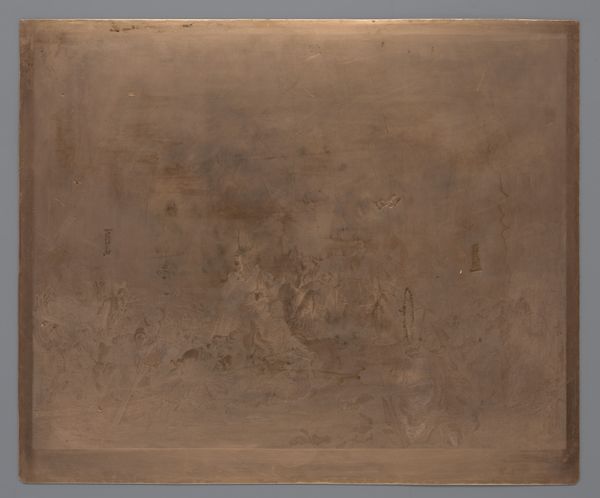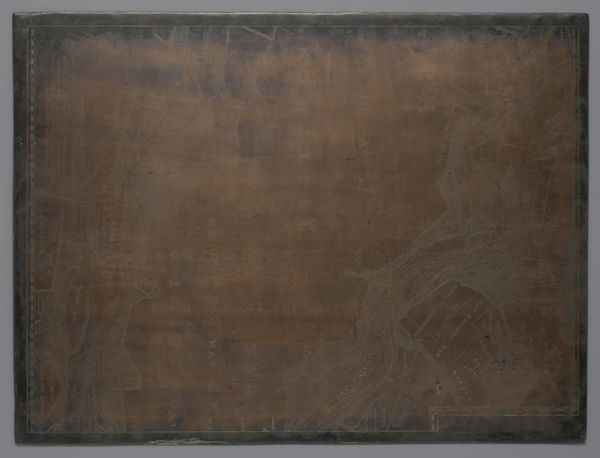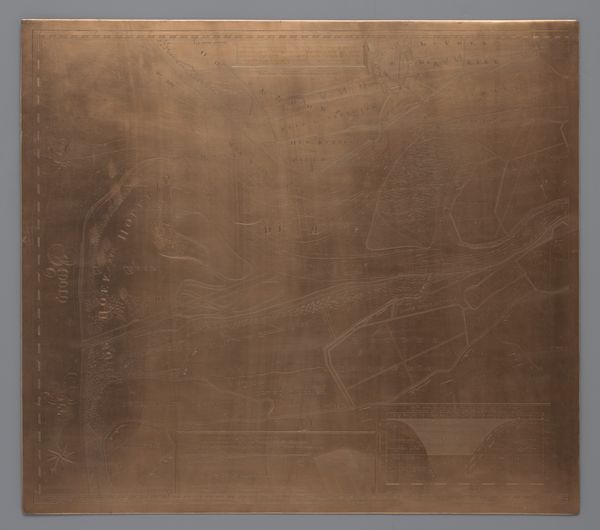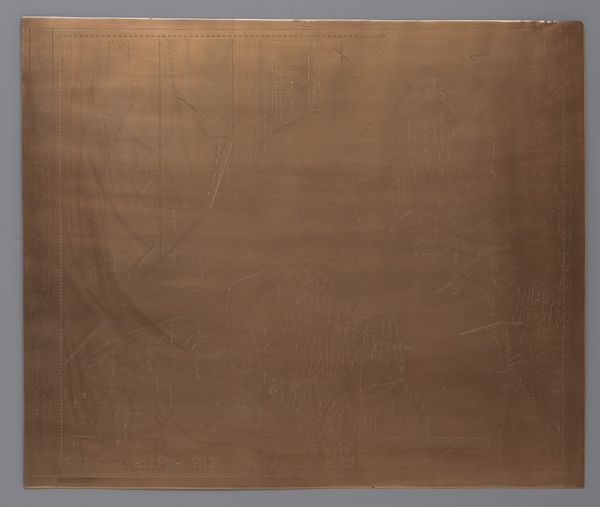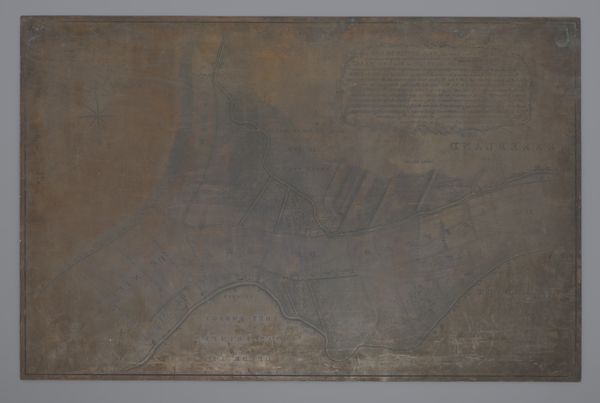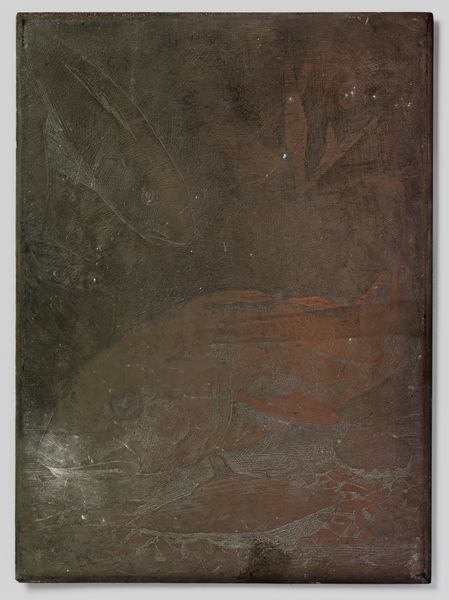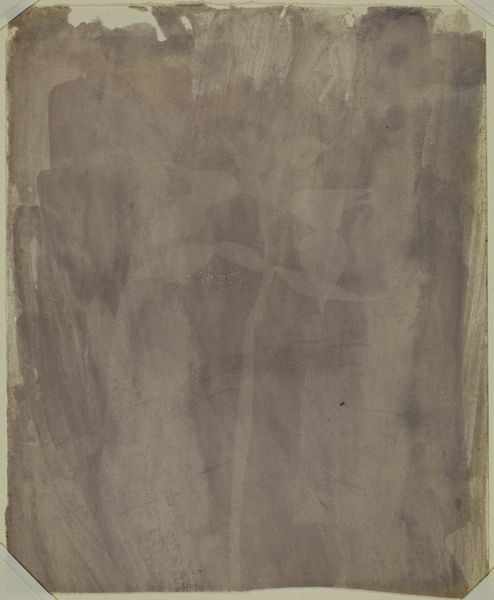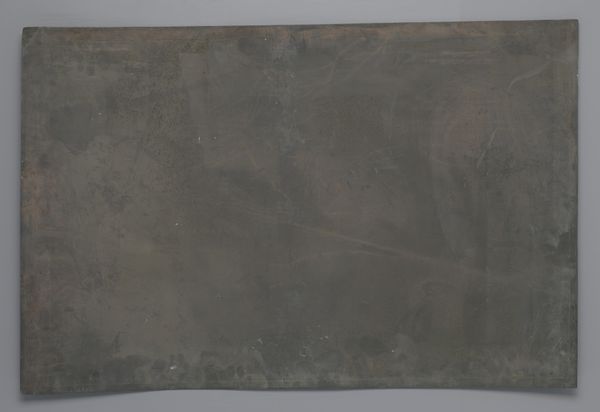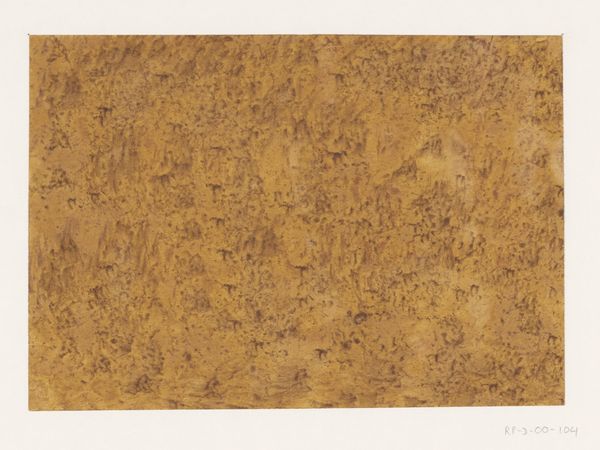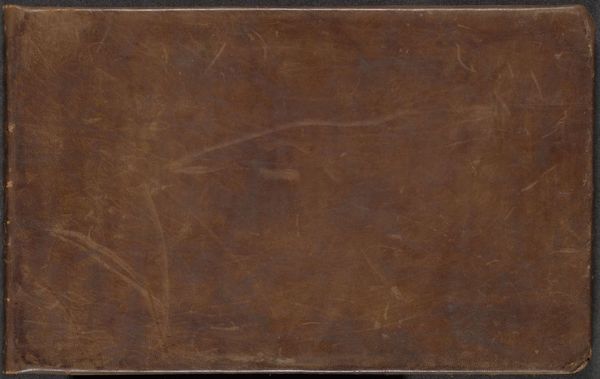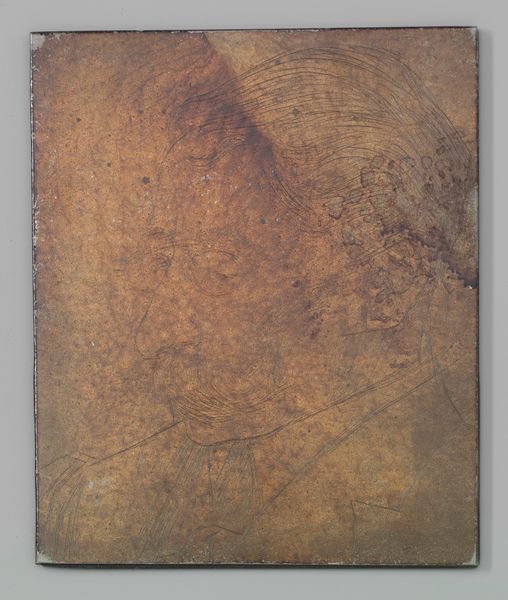
Koperplaat met een kaart van de drooglegging van de Haarlemmermeerpolder 1842
0:00
0:00
print, metal, engraving
# print
#
metal
#
engraving
Dimensions: height 770 mm, width 1349 mm
Copyright: Rijks Museum: Open Domain
Editor: Here we have a copperplate engraving from 1842, "Koperplaat met een kaart van de drooglegging van de Haarlemmermeerpolder", attributed to Daniël (II) Veelwaard, housed at the Rijksmuseum. The flat, metallic sheen of the plate is quite striking. What is your interpretation of this work? Curator: Considering the function of the piece is to produce printed maps, it might seem austere without an impression. However, the copper itself is significant. Consider its materiality – the density, malleability, and capacity to receive finely detailed engravings. Look at the almost imperceptible lines, evidence of countless hours dedicated to carving precise geography into its surface. This is a testament to human skill and labour. Editor: I hadn't thought about the material itself as part of the artwork, but now that you mention it, the smoothness seems almost… intentional? Are the marks purely functional, or is there some aesthetic consideration in their arrangement? Curator: That is a salient question. We must attend to the composition; the incised lines and borders offer a sense of order. Are these marks merely a functional precursor to printmaking, or can we decode a structural, almost architectural intention in their presence? What do you discern from the traces that could guide this formal inquiry? Editor: Perhaps it is a structured pattern rather than accidental, since there's a border and clear sections that might contain specific map elements when printed. That really changes my initial impression. Curator: Precisely. We have shifted from a simple tool to something demanding a critical approach focusing on line, form, and compositional organization. Considering the potential for a system within what appeared simply functional, reveals its layered formal complexities. Editor: That reframing highlights how much richer the experience of just observing its lines, the materials, and the design becomes. It makes me curious to study similar copperplates. Curator: Indeed, focusing on intrinsic components expands our aesthetic inquiry, adding depth and new viewpoints for how we value art objects.
Comments
No comments
Be the first to comment and join the conversation on the ultimate creative platform.
